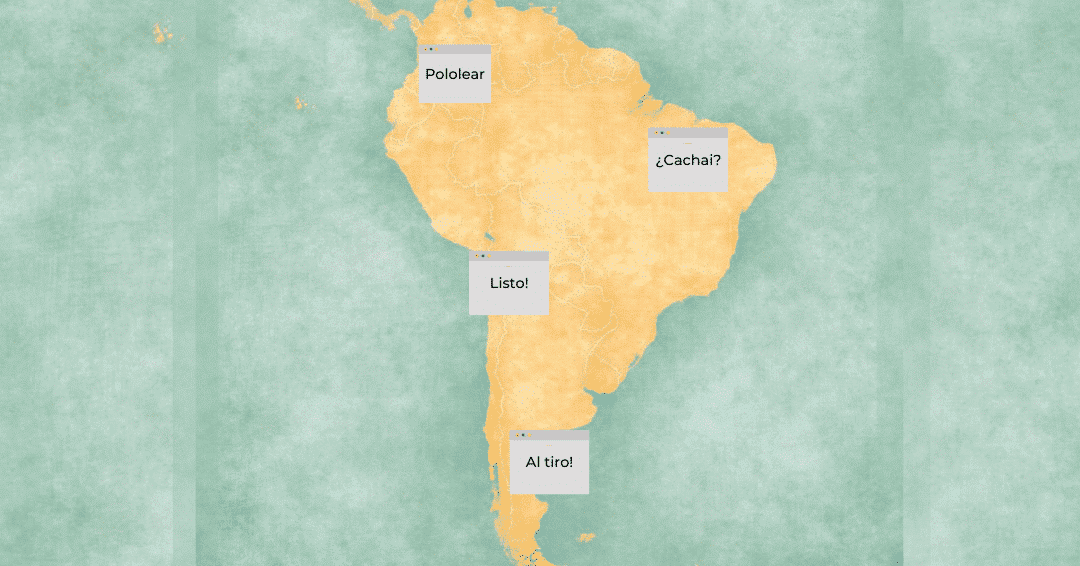If you’ve decided to expand globally through website translation for Latin America, congratulations! You are making a smart choice.
Tapping into a market of 500 million people that are geographically scattered across a vast continent is a daunting endeavour.
However, Latin America is worth the effort. A recent report made by Barclays Capital shows that Latin America is now one of the fastest-growing economies in the world, even outpacing the Asian market.
In recent years, the use of Spanish online has increased by 800%. A few years from now, 10% of the world’s population is expected to understand Spanish.
In light of this rapid growth, websites looking to increase organic traffic and grow their brand in South America must tailor their content to the Spanish speaking community.
Website localization is a vast topic that requires tremendous research, time, and attention to detail. It includes translation, media localization, changing dates and currencies, and localizing colors and symbols.
The translation is the single largest (and arguably most important) component of localization.
In this article, we will give you 5 tips on website translation for Latin America.
Understand Grammatical Differences

Depending on the country, Latin-American Spanish has plenty of grammatical differences.
Although it may seem like minor changes here and there, some may even interfere with the understanding of a certain message in a specific country.
Understanding grammatical differences are the first step in obtaining flawless website translation for Latin America.
Amongst them, pronouns are the most frequent grammatical mistakes made by inexperienced translators.
For instance, ‘you’ (singular) is translated as tú in most Spanish speaking countries. However, countries like Uruguay, Paraguay, and Argentina use vos instead.
Similarly, European Spanish uses vosotros as the plural form of ‘you,’ while most Latin American countries use ustedes.
Remember Vocabulary Variants

Just like English speakers from the US use different words than those in the UK, the same happens in Latin American countries.
To get a sense of the diverse variety of vocabulary in Latin America, consider that a simple food like ‘black beans’. It is translated as caraotas in Venezuela, porotos negros in Argentina, frijoles negros in Colombia, and judías negras in Spain.
Remembering to use vocabulary variants when performing website translation for a specific country will make your audience feel more confident with your brand.
Be Cautious with ‘Neutral Spanish’
‘Neutral’ Spanish – also known as ‘standard’ or ‘universal’ Spanish – refers to choosing terms that most Spanish speakers would understand.
International corporations frequently use this type of Spanish. Its main benefit is to avoid the use of colloquialisms that could confuse readers from countries unfamiliar with the local terms.
Although there is nothing wrong with choosing ‘neutral’ Spanish, companies with audiences reduced to a single country (or culturally similar regions) should try to localize their content as much as possible.
Users will feel closer and engage more with your product, thus increasing your chances of turning them in customers.
For instance, in the Argentinian market, translating ‘listen to your heart’ to ‘hazle caso a tu corazón’ would sound robotic and cold to that population.
Instead, they should use the Rioplatense Spanish version ‘hacéle caso a tu corazón’.
Also Read: The Top Languages Spoken in California
Research and Look for Specific Terminology

Inexperienced translators usually jump right in and start translating without doing any research.
But as you might have noticed, Latin America is filled with different cultures, ethnicities, customs, morals, and beliefs, thus forming a complex region that should receive the appropriate translation approach.
If you are not a native speaker of the target country, your translation process should include research and look for specific terminology.
For instance, if you are dealing with tourism, you should first research the institutions’ names and places to see if they have an official translation or if they should be kept in the original language.
An example where specific terminology applies is identity documents. Venezuelans and Panamanians call their ID ‘cédula de identidad’, while Colombians call it ‘cédula de ciudadanía’. Argentinians and Peruvians on the other hand, call it ‘documento nacional de identidad’.
Don’t Forget about other Languages
Spanish might be the most widely spoken language in Latin America, but did you know Brazilian Portuguese has the most speakers?
Brazil’s giant economy, topped with a population of over 200 million, is enough to justify the importance of website translation for this region.
And just like European and Latin American Spanish, Portuguese spoken in Brazil is significantly different than the one spoken in Portugal.
The right translator for this job should be aware of this difference and ideally be from Brazil.
Spanish and Portuguese are by far the most spoken languages in Latin America; however, other colonial languages are official in some countries. For instance, French is the official language in French Guiana, and Dutch is the official language in Suriname.
Summary
Latin America is a fast-growing market full of business opportunities. Investing in website translation for this region is a proven method to make your product or brand know, increase your traffic, and boost your revenue.
When tackling Latin America, the most crucial factor for achieving greatness is to find translators with experience and knowledge on the minute but relevant intricacies of the region.
If you are just starting out on a limited budget, the best approach can be to decide which country is your most important market. This can be based on research or previous experience.
Alternatively, you can pick the countries with the largest population. You can then translate and localize your website for this market.
Once business picks up, you can create different versions of your site for the different countries in Latin America.
We have native translators from every country in South America. We can help you adapt your content in every dialect of Spanish so it resonates with your target audience.
Get in touch with us here.






